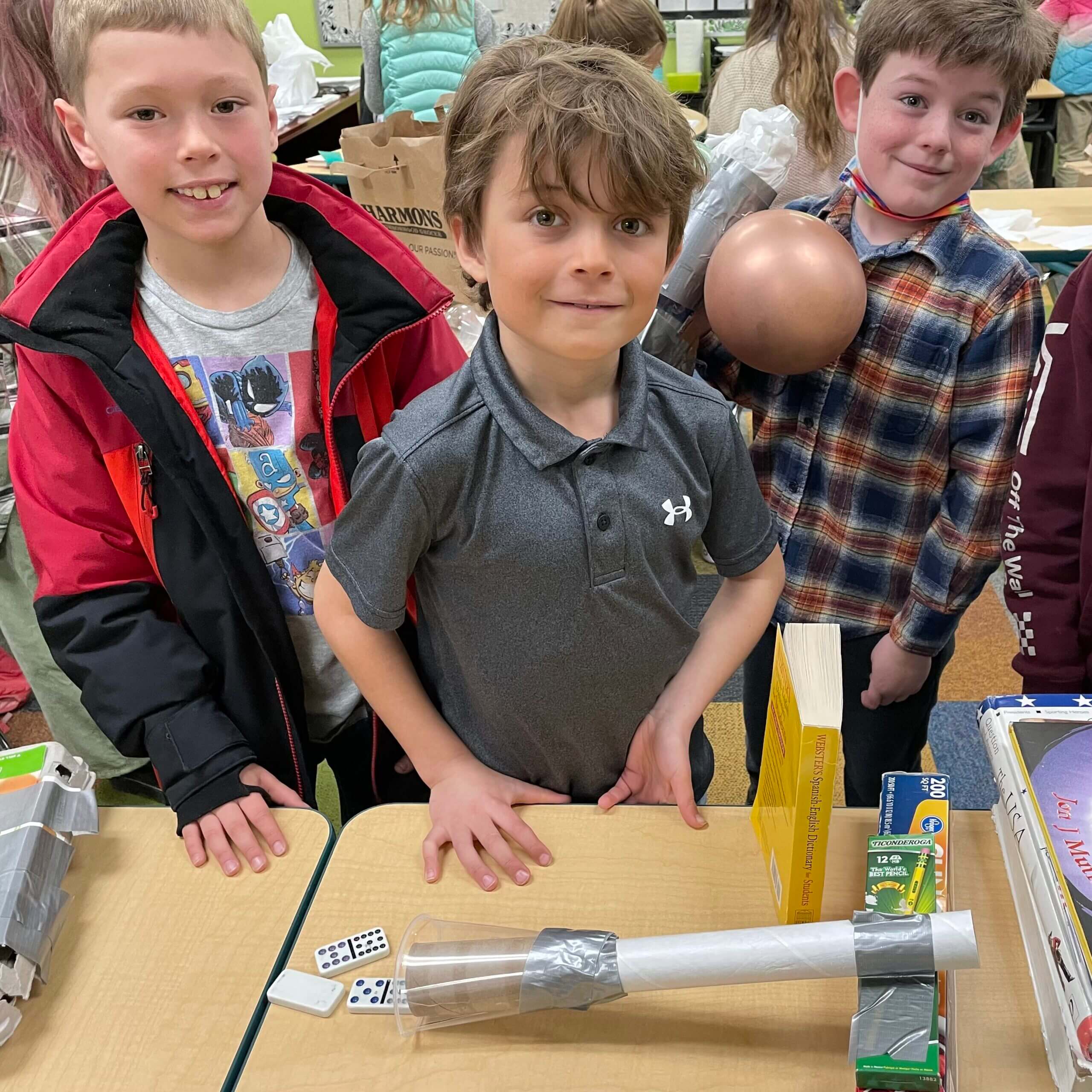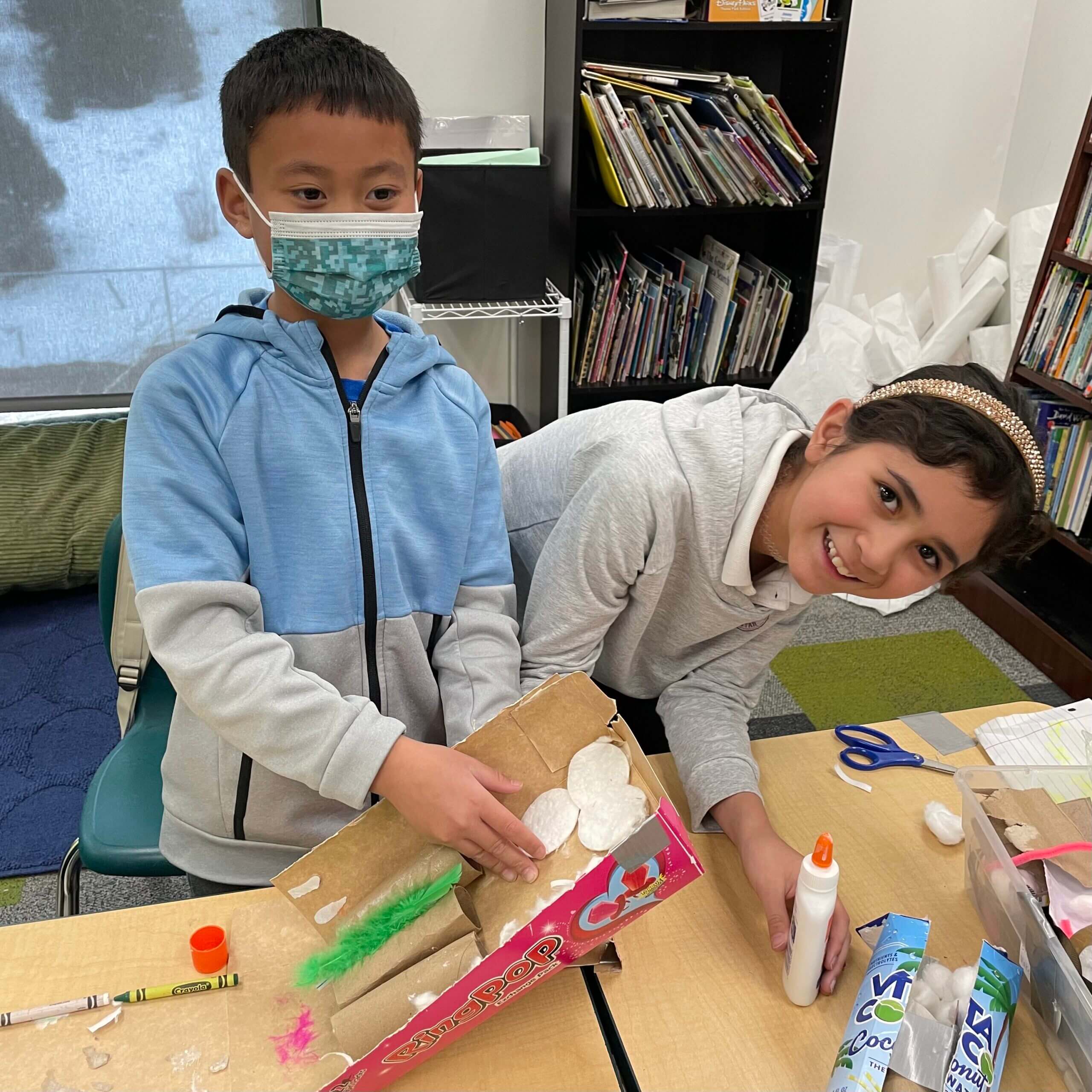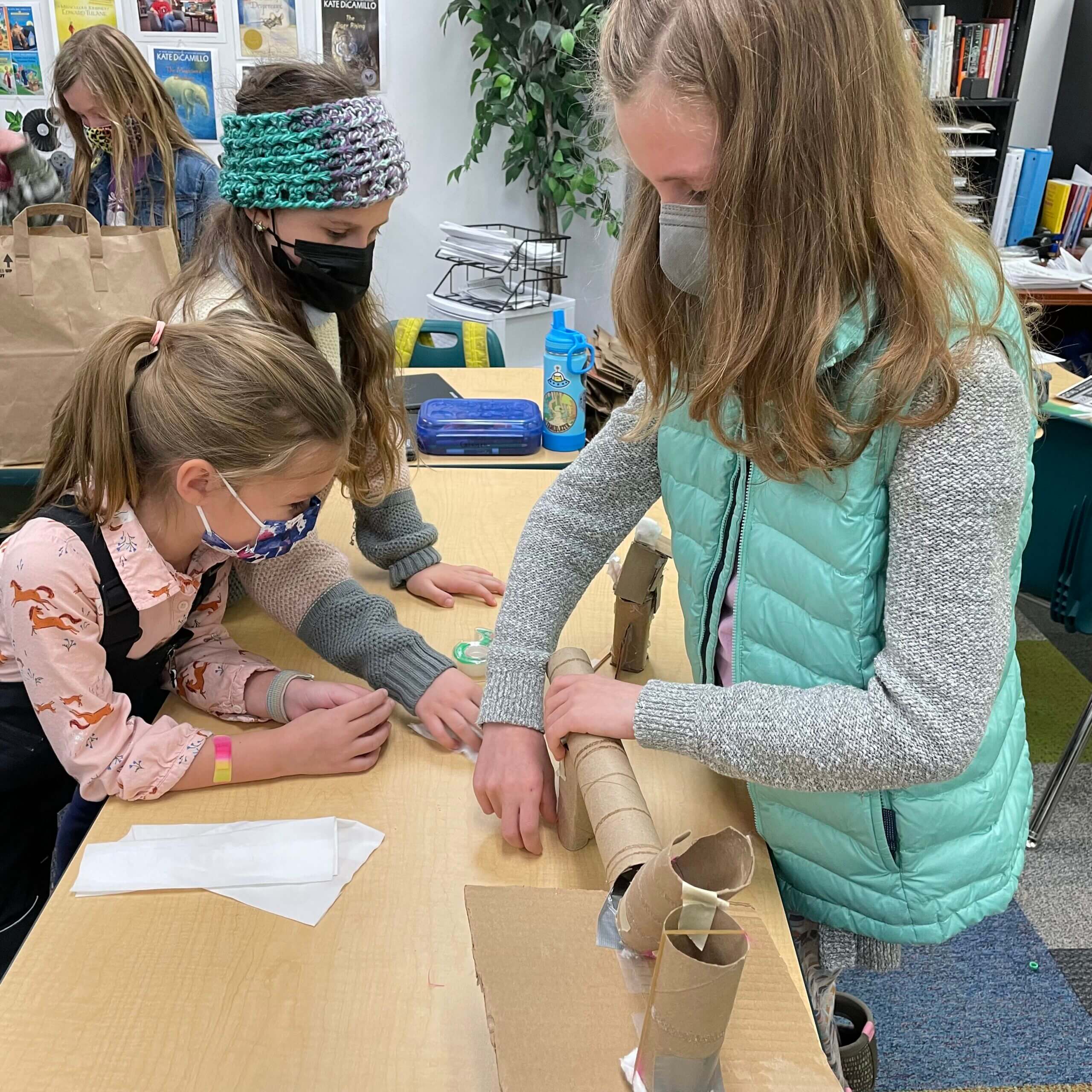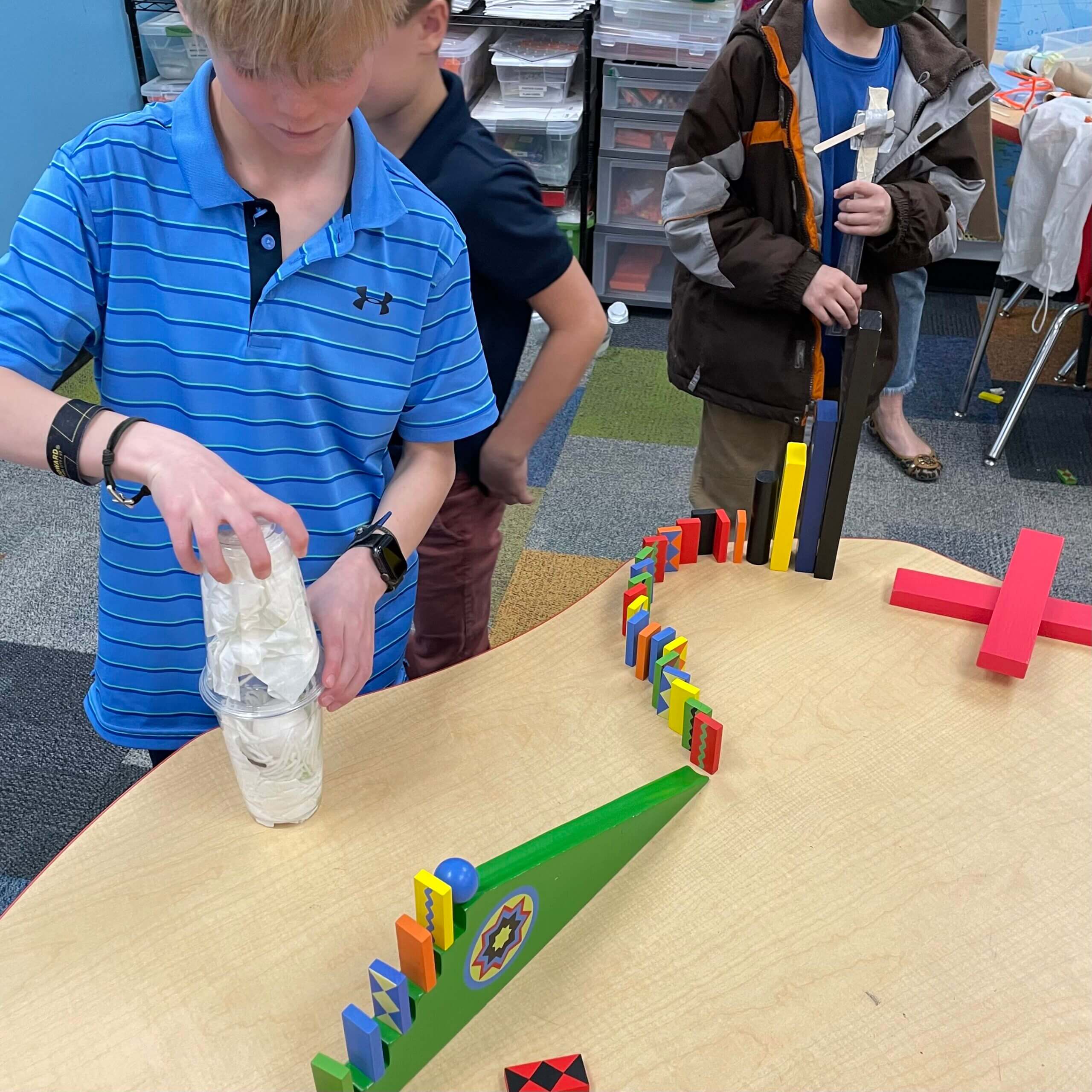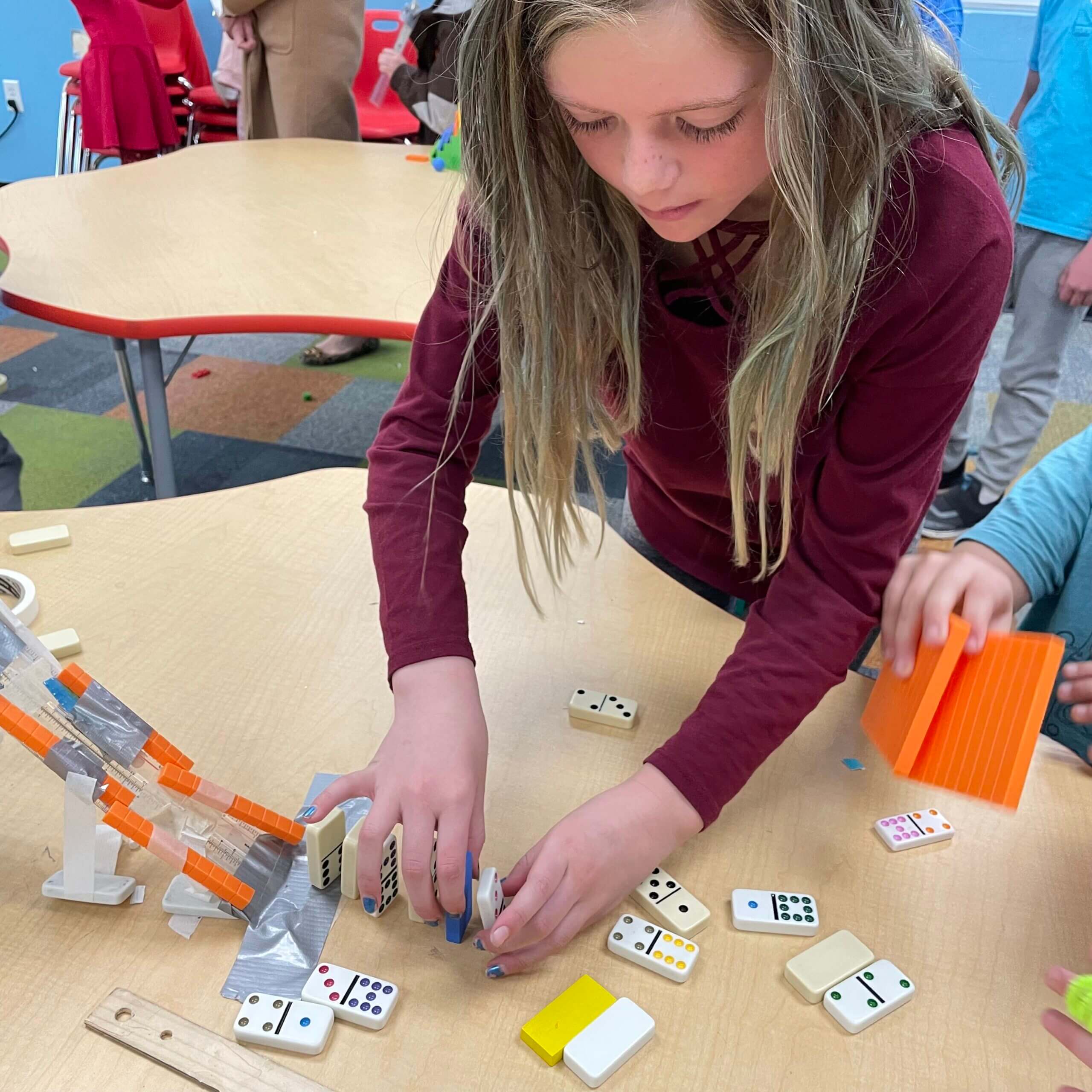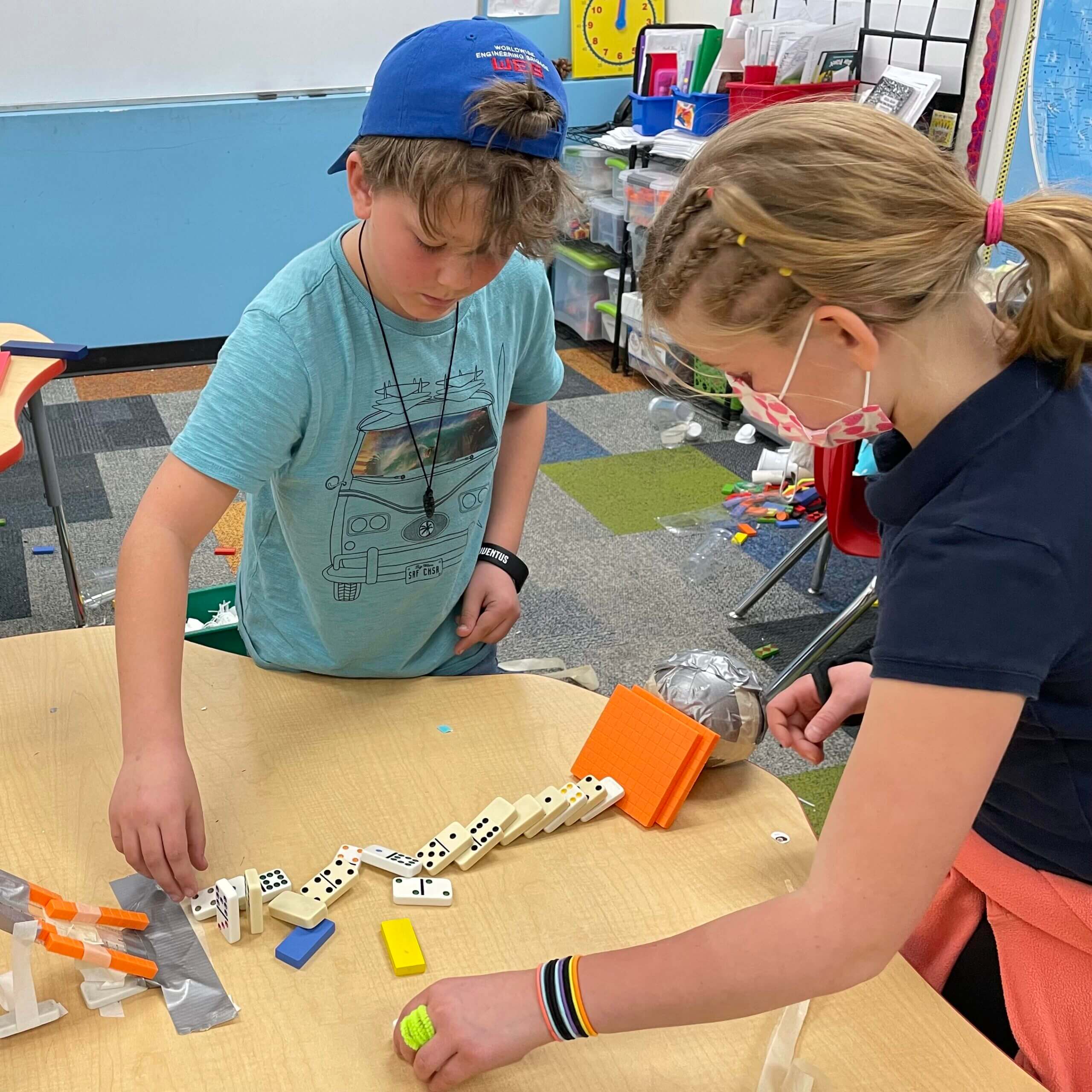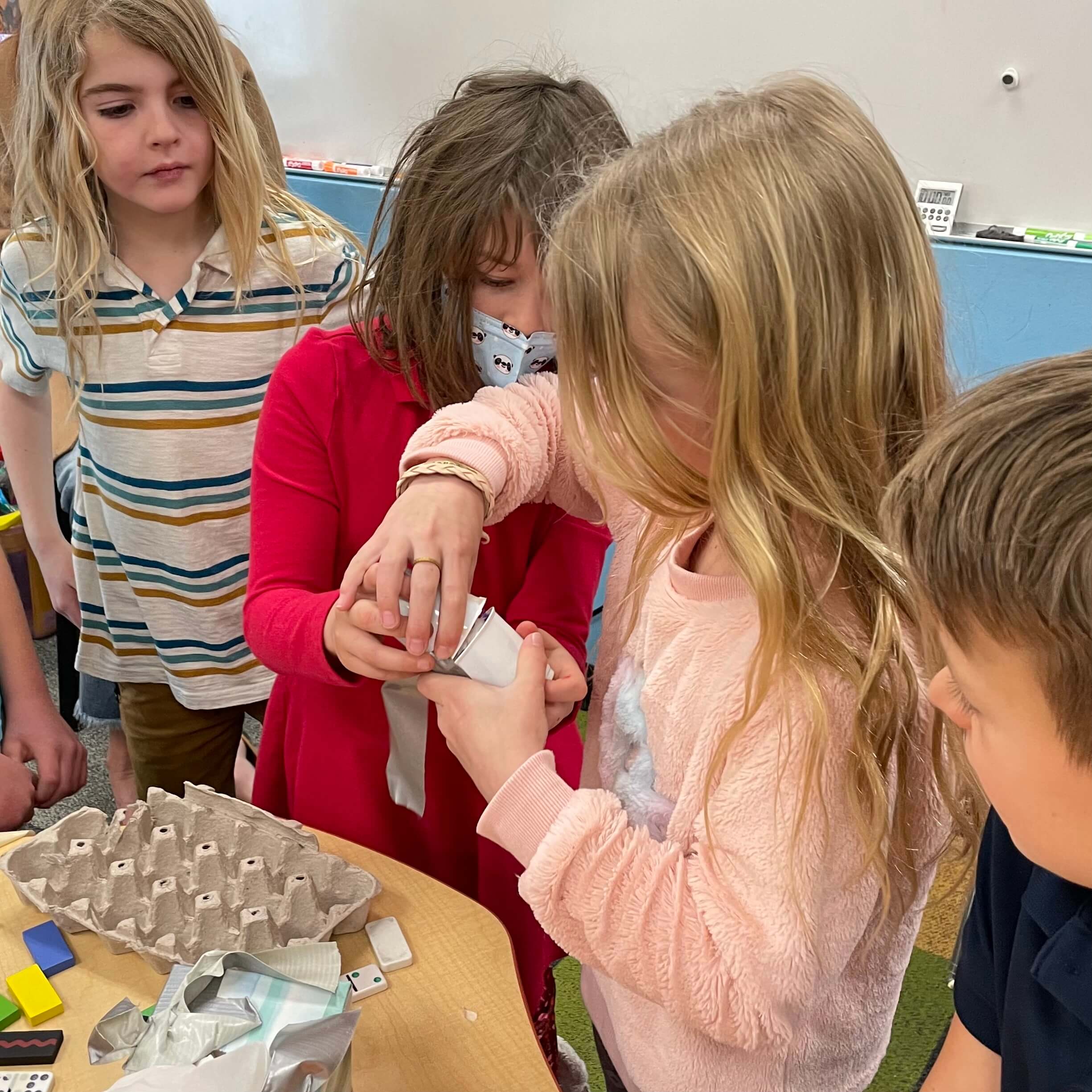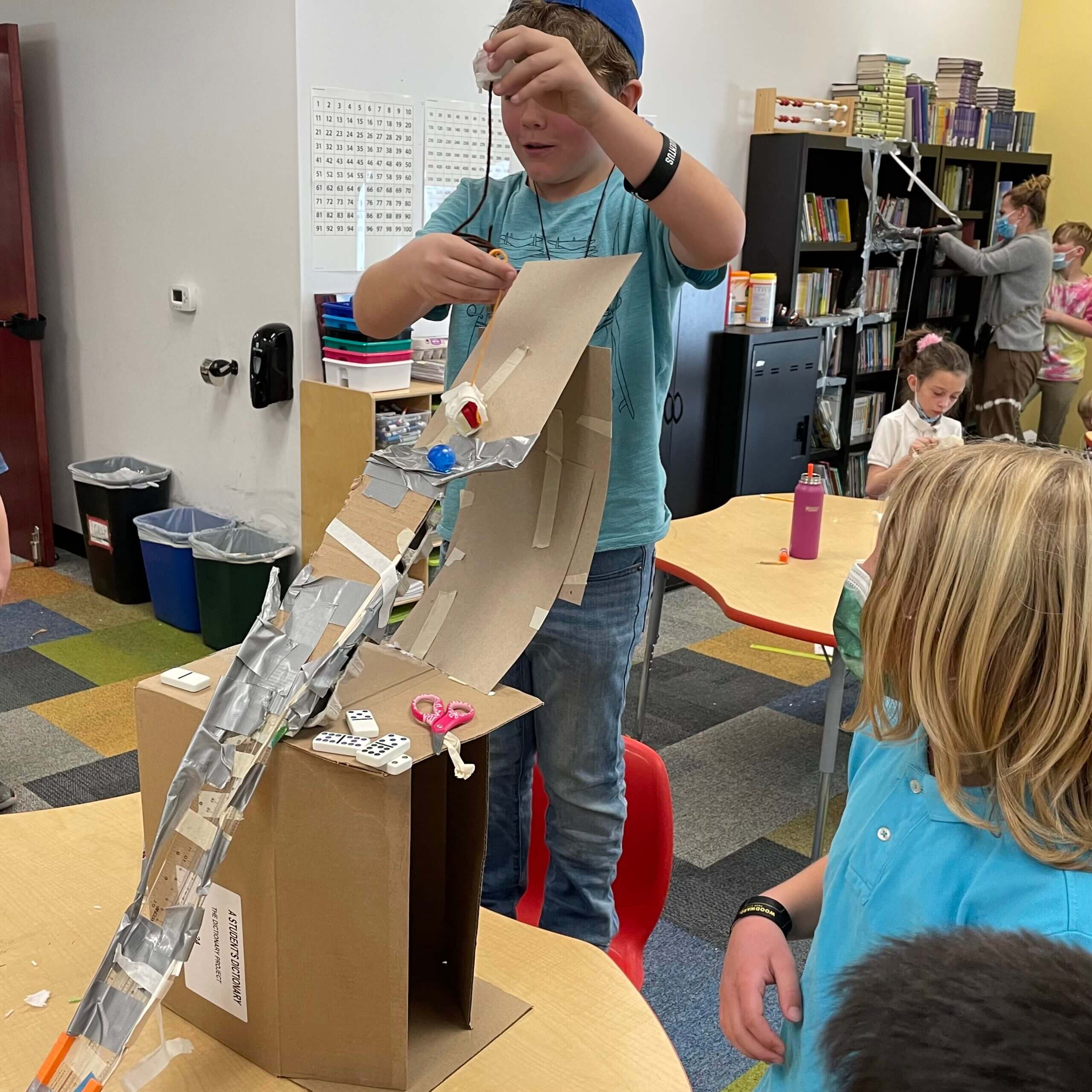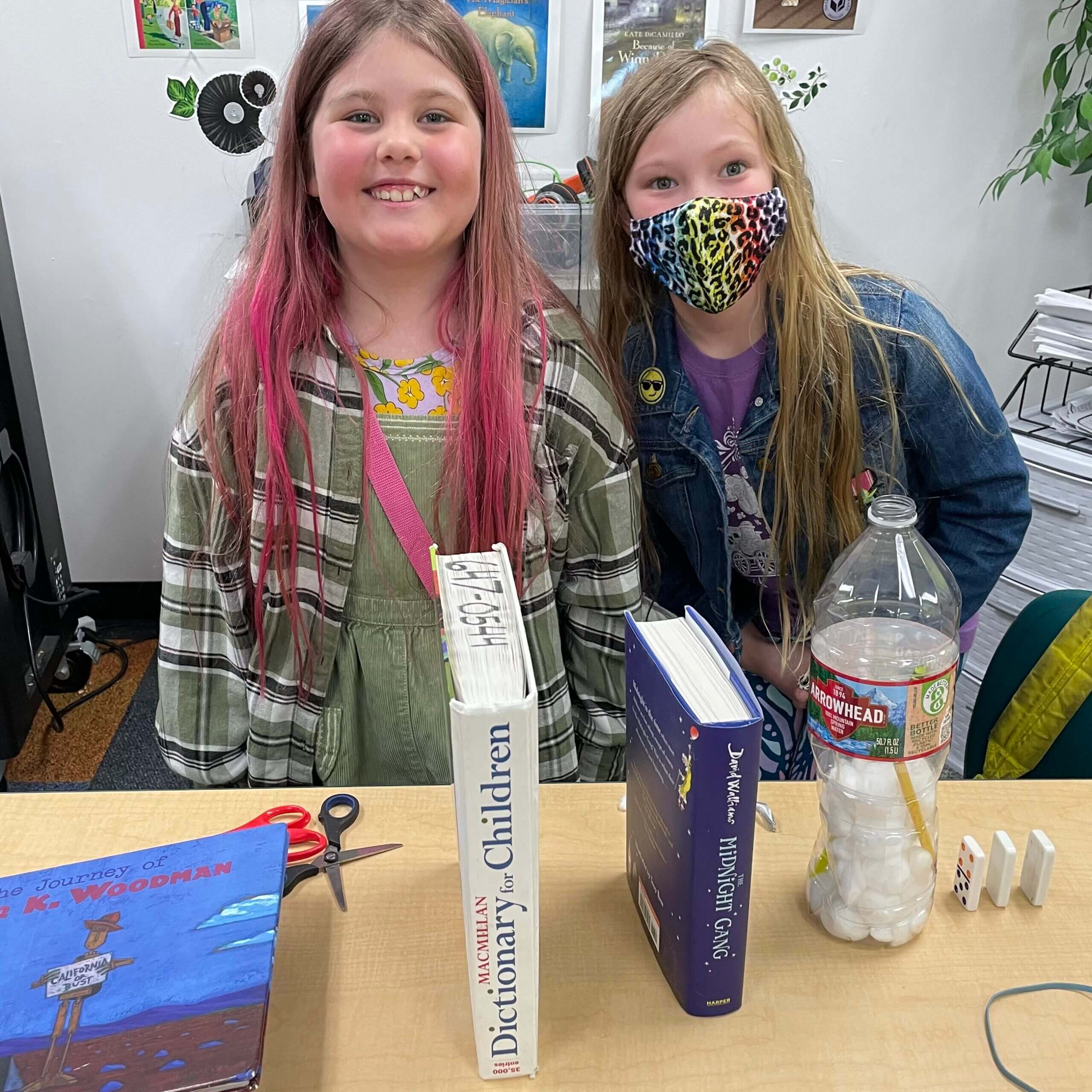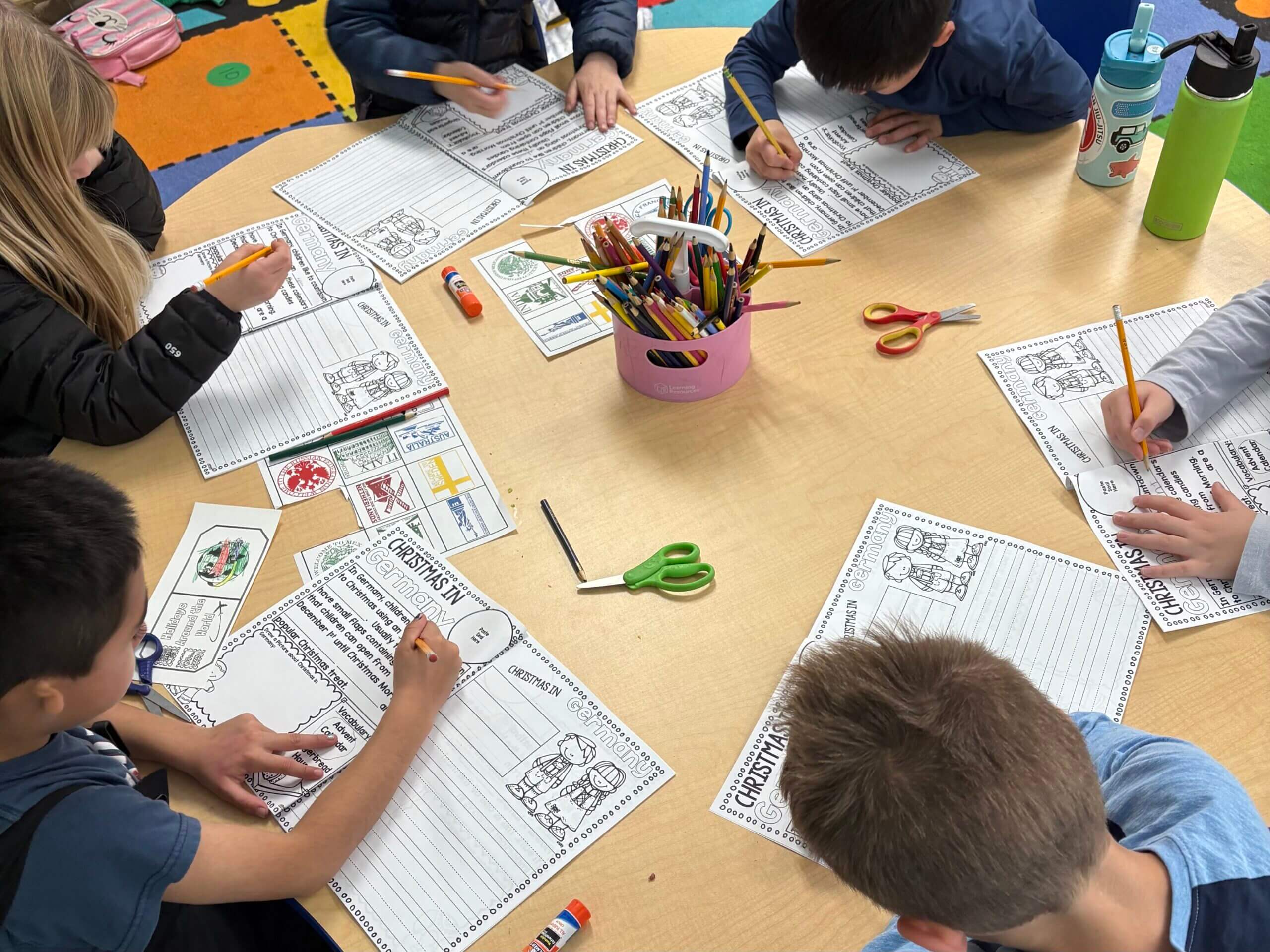First graders at WSD are “traveling” the globe to learn about how students from other…
Third graders are designing, constructing, and testing homemade rocket launchers as a way to better understand the basic physics of force and motion. By actively engaging in the project, the science concepts become easy for them to understand and apply.
The first step of the project is to draw a plan for a chain-reaction style rocket launching machine. When launched, the rocket must carry an egg and land it without breaking it. Students then form small groups, share their designs with their groups, and from there collaborate on a design they believe will accomplish the task. Machines are built from objects found at home or in the classroom, including books, dominoes, paper towel rolls, empty cartons, golf balls, cotton balls, and duct tape. They must have at least three different “stops,” or outside forces, and all objects must be at rest before the machine is activated.
As students test their machines, they see the push of an outside force and the pull of gravity in action. The focus of the project is to help them understand what their machines are doing and why – the success of the rocket launch is secondary.
“Some students worry that their rocket launch might fail,” observes third grade teacher Kerri Miller, “but I tell them it’s not a failure, it’s an opportunity to try it a different way. That’s what scientists and inventors do all the time – they keep trying things a different way.”
